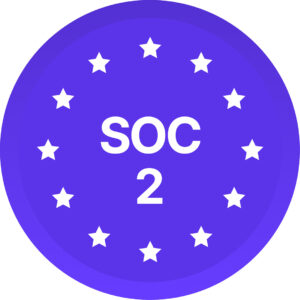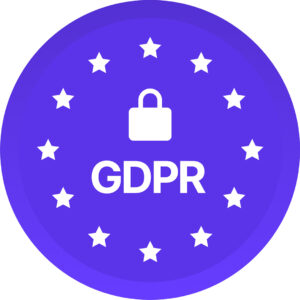In my capacity as a leader, the delicate balancing act I navigate often feels akin to walking a tightrope. While my overarching goal is to foster inclusivity, the relentless demands to achieve tangible results can tempt me to see challenges through a binary lens. The pervasive pressure and urgency that leaders contend with create a seemingly compelling argument for quick categorization: ideas are either worth exploring or dismissed, staff are perceived as either engaged or disengaged, and decisions are hastily labelled as right or wrong.
The allure of this “either/or” approach lies in its apparent efficiency. Swift categorization appears to streamline the decision-making process, promising a reduction in the time it takes to resolve pressing issues. It provides a sense of clarity in an otherwise complex landscape, seemingly offering a shortcut through the intricacies of leadership.
However, upon closer inspection, I recognize that this binary mindset oversimplifies the nuanced reality of the challenges we face as leaders. Issues rarely fit neatly into predefined categories. Ideas, even if not immediately apparent in their value, may hold potential for innovation when given the space to evolve. Staff engagement exists on a spectrum, and decisions often reside in the grey area between absolute right and wrong.
This either/or approach, while momentarily expedient, minimizes the depth and complexity inherent in leadership dilemmas. It is in acknowledging and embracing the multifaceted nature of our responsibilities that we truly harness the potential for sustainable growth and success. As leaders, the journey involves finding harmony between the need for efficiency and the imperative to appreciate the richness of diverse perspectives and multifaceted solutions.
The Harm of Either/Or Thinking
1. Stilling Innovation
In the ever-evolving world of business, leaders are often confronted with the need for innovation to stay competitive. However, either/or thinking tends to limit leaders to binary choices, stifling creativity and innovation. The challenges of navigating strategic decisions demand leaders who can embrace a “both/and” mindset, opening the possibility of integrating multiple perspectives for more innovative solutions.
2. Reduced Adaptability
The ability to adapt to change is a cornerstone of effective leadership. Leaders must balance short-term goals with long-term strategies, a delicate act that requires a flexible mindset. An either/or mindset may hinder adaptability, preventing leaders from effectively responding to evolving challenges. Recognizing the importance of adaptability in the face of diverse organizational needs becomes crucial.
3. Binary Leadership Limits Value Creation
Binary thinking limits leadership effectiveness and stifles value creation. Leaders often face contradictory pressures, and a rigid either/or approach can result in missed opportunities. By embracing “both-and” thinking, leaders can unleash their creativity and tap into the full spectrum of possibilities.
Embracing Duality
1. Recognizing Paradoxes
Leaders should acknowledge and accept the existence of paradoxes in leadership. A paradox is not a problem to be solved but a reality to be navigated. Leaders must recognize that contradictory pressures often require a “both/and” approach rather than an either/or choice.
2. Cultivating a Both/And Mindset
Encouraging leaders to adopt a both/and mindset is critical. This involves recognizing that strength and vulnerability, risk-taking and caution, can coexist for effective leadership. In emotionally charged leadership scenarios, acknowledging and integrating both aspects becomes essential.
3. Fostering Inclusive Decision-Making
Leaders should actively seek diverse perspectives and opinions, recognizing that inclusive decision-making leads to better outcomes. This involves moving away from a divisive either/or approach to a more collaborative and holistic decision-making process.
4. Balancing Strength and Vulnerability
Leaders often face the challenge of balancing strength and vulnerability. While projecting confidence is essential, acknowledging vulnerability can build trust and authenticity. By recognizing that strength and vulnerability are not mutually exclusive, leaders can foster a workplace culture that encourages open communication and psychological safety.
5. Integrating Both/And Leadership
In leadership across diverse organizations, embracing a both/and leadership approach involves recognizing the interconnected nature of seemingly opposing forces. Leaders can create workplaces that foster innovation, adaptability, and holistic well-being by acknowledging and embracing duality.
In conclusion, the harm of either/or thinking in leadership is evident in its limitations on innovation, adaptability, and value creation. Embracing duality requires leaders to navigate paradoxes, cultivate a both/and mindset, foster inclusive decision-making, and balance strength with vulnerability. The complexities of leadership demand a nuanced and adaptive approach. By recognizing the interconnected nature of seemingly opposing forces, leaders can create workplaces that not only meet the challenges of the modern business landscape but also foster innovation, adaptability, and holistic well-being.
Sources:
- Lolly Daskal – How The Duality of Leadership Works (https://www.lollydaskal.com/leadership/the-duality-of-leadership/)
- Harvard Business Review – “Both/And” Leadership (https://hbr.org/2016/05/both-and-leadership)
- The Growth EQ – A New Way of Thinking: Not Either-Or, But Both-And (https://thegrowtheq.com/a-new-way-of-thinking-not-either-or-both-and/)
- Forbes – From Either-Or To Both-And: Binary Thinking In Leadership (https://www.forbes.com/sites/forbescoachescouncil/2023/05/31/from-either-or-to-both-and-binary-thinking-in-leadership/)
- Fearless Culture Design – There Are Two Ways to Lead People – Divide and …(https://fearlessculture.design/blog-posts/dividing-people-is-the-best-way-to-lead)
- AWSA – Embracing The Power of a Both/And Mindset as a Bridge to a Better Place (https://awsa.memberclicks.net/update-article–embracing-the-power-of-a-both-and-mindset-as-a-bridge-to-a-better-place)
This blog was authored by Zakeana Reid and was previously published by Diversio EDU (formerly CCDI Consulting) in May 2024
Our newsletter and blogs feature personal opinions and diverse viewpoints. We aim to create a safe space for our team to share their perspectives on diversity and inclusion. Please note that individual articles may not align with every reader’s view or comprehensively cover a topic. We appreciate the diversity of opinions and respect our team’s contributions.

